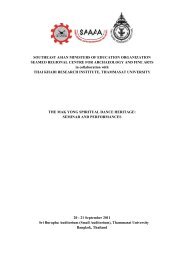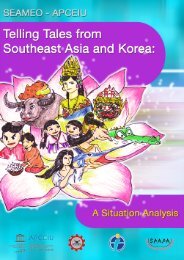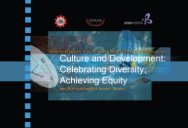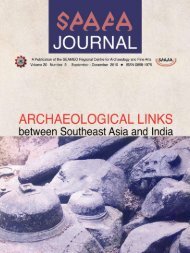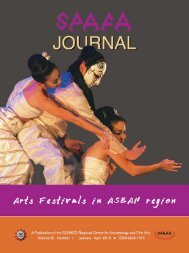on Culture & Development - Seameo-SPAFA
on Culture & Development - Seameo-SPAFA
on Culture & Development - Seameo-SPAFA
- No tags were found...
You also want an ePaper? Increase the reach of your titles
YUMPU automatically turns print PDFs into web optimized ePapers that Google loves.
Procedure:1. Form groups of 4-5 pers<strong>on</strong>s.2. Give each group a sheet of flip chart paper and ask them todraw a large circle.3. Distribute a set of ‘event’ cards to each group. Askparticipants to place the cards around the circle according tothe most likely or logical sequence they can identify. Thecards c<strong>on</strong>tain the words:80COUNTRY CONSULTATIONSIDENTIFICATIONPROJECT FORMULATIONAPPRAISALFINANCING DECISION & TENDERING & CONTRACTSIMPLEMENTATION & MONITORINGPROJECT COMPLETIONEVALUATION4. Invite the groups to comment, <strong>on</strong>e-by-<strong>on</strong>e, <strong>on</strong> theprogramme cycle they have created. Ask them to c<strong>on</strong>siderthe following questi<strong>on</strong>s before commenting:How does your own pers<strong>on</strong>al/group experience influencethe sequence you have made?Is the sequence always cyclic?5. Following feedback show the participants the generallyaccepted logical programme cycle as illustrated below.6. Invite the groups to compare their programme cycle withthis illustrati<strong>on</strong> and with the programme cycles prepared bythe other groups.



